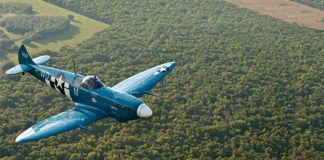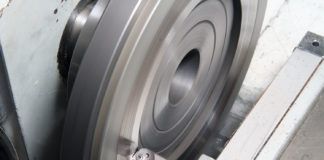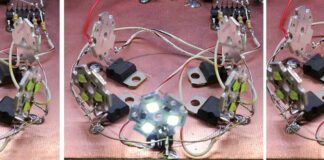All Wet?
The Freedom article by Roy Beisswenger (KITPLANES®, July 2013) is only half a loaf. What about seaplanes? It’s a narrow mindset: If it ain’t got wheels, it ain’t an airplane.
Dean Merriman
Well Dean, we hope this issue proves to you that our minds aren’t quite that narrow. Enjoy the story of the SeaReys.—Ed.
The Need for Speed
In Dave Prizio’s article about the hot rod exhaust system (KITPLANES®, July 2013), there is reference to speed gains at the same rpm. It doesn’t work that way. Everything else being equal (weight, prop, air temperature, etc.), the speed will be exactly the same at the same rpm. It doesn’t matter if you double or triple the horsepower. It seems like Dave has been around long enough to know this. I measure speed gains (or losses) all the time when testing mods, and the most accurate way to do it is to watch for a change in rpm (always at full throttle and the same density altitude.) In my plane 10 rpm equals 1 mph.
Bob Holliston
Dave Prizio Responds: Bob’s point would be true if we were dealing with a fixed-pitch prop. In fact, the tachometer becomes a pretty good poor-man’s dynamometer in such cases. However, with a constant-speed prop, the pitch of the prop automatically increases to absorb the additional power, without changing the rpm of the engine. The ability to sustain the same rpm at a higher pitch is what pulls the plane through the air faster when more power is available to do so.
Evolutionary Speed
Thanks for a great article on the Lancair Evolution (KITPLANES®, July 2013). The article stated that at 101.5% N1, they trued out at 282 knots at FL280. What was the outside temperature? My Evolution routinely is at 299 to 302 at ISA, at near-max weight at FL280 at 35gph, and mine is not yet painted. I have seen reduced speeds when in clouds, high humidity, or really high temps. The 282 number seems really low. Based on my data and data from other owners, there is usually only 3 or 4% variance in top speed.
Steve Kiene
Doug Rozendaal responds: Doug Meyer said that the demo airplane was a little slow. It has a slightly different engine air intake, and that might make a difference. Even at 282 KTAS, it’s pretty fast, and way better fuel specifics than my Baron.
Do It Yourself
Tom Kuffels article on two-axis trim (KITPLANES®, June 2013) is awesome! I enjoyed his way of breaking down the circuit description to the component level. I’m looking forward to more articles from Tom.
Dave Lewis
We look forward to more contributions from Tom as well. Not everyone will want to build their own electronics, but then, not everyone paints their own homebuilt, or overhauls their own engine either. KITPLANES® is here to provide information on how to do it yourself—and for those who choose to buy components or have specific work done for them, we refer you to any (or many) of the fine companies that support Experimental aviation.—Ed.
Write to [email protected] or mail a piece of your mind to:
KITPLANES, P.O. Box 856, Friendswood, TX 77549, USA




